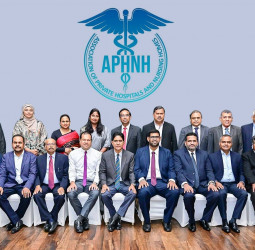By Ranga De Silva
After completing advanced level (A/L) education in school, higher education is of the utmost importance to students to enhance career opportunities. Some students move immediately to employment, seeking avenues to fund higher education via employment earnings, while some directly move to higher education after school.
According to the Department of Examinations, Sri Lanka, approximately 270K students sat for the local advanced-level program this year. In general, students with a higher education degree have the opportunity to obtain a significant premium on salary and fast-track their careers within the organization compared to students directly coming out of school.
The key obstacles to pursuing private higher education are affordability and the lack of funding opportunities for students. The most common channels for funding higher education in Sri Lanka include parent/ family funding, self-funding via employment, educational loans/ credit card-based financing, and/or a combination of these.
Post the unprecedented economic crisis in Sri Lanka, with the LKR depreciating close to 50% during the period Feb 2022 to May 2024 (at one point, depreciating as much as 80% before coming back to the current levels), the cost of foreign-affiliated private higher educational programs increased by a sizable amount, creating further affordability issues.
On the positive side, given the relatively reasonable level of stability the Sri Lankan economy has achieved this year, interest rates have become more affordable for debt financing, with the baseline weekly AWPR (Average Weighted Prime Lending Rate) coming down to sub 10% in May 2024 vs. 28%+ in Jan 2023 [see note 1].
Given that not all students have the luxury of obtaining a fully family-funded education, the reduction in interest rates now opens up a significant opportunity for students to explore affordable debt financing avenues to pursue higher education, especially for employed students and/ or students partially backed by family. Student loan rates currently start at approximately 14%, subject to the applicant’s creditworthiness.
In addition to the promising reduction in interest rates, technological advancements in EdTech and FinTech are crucial in easing the burden of financing higher education. Digital loan aggregator platforms such as “Yara EduLoan” leverage cutting-edge technologies to assist students and parents in navigating the myriad of available educational loans and credit card facilities. The platform enables students to comprehensively compare loan terms, interest rates, repayment options, and make informed decisions that best suit their financial situations. By simplifying the loan product selection process the platform connects students with multiple financial institutions at the same time. EdTech and FinTech solutions make higher education more accessible and affordable, empowering students to achieve their academic and career aspirations without the undue stress of financial constraints.
Investing in one’s education is the most important and lifelong investment one can make. With the current favorable economic conditions and the support of innovative EdFinTech solutions, students and their families now have more accessible and affordable pathways to finance higher education.
(The writer is the Manager at Yara Technologies EdFinTech, which owns and operates the “Yara EduLoan” platform. For more information, visit us at www.eduloan.lk or email [email protected].)
Sources:
Note 1: Weekly Average Weighted Prime Lending Rate (AWPR) as per Central Bank of Sri Lanka https://www.cbsl.gov.lk/
You Must be Registered Or Logged in To Comment Log In?



 A.R.B.J Rajapaksha
A.R.B.J Rajapaksha



